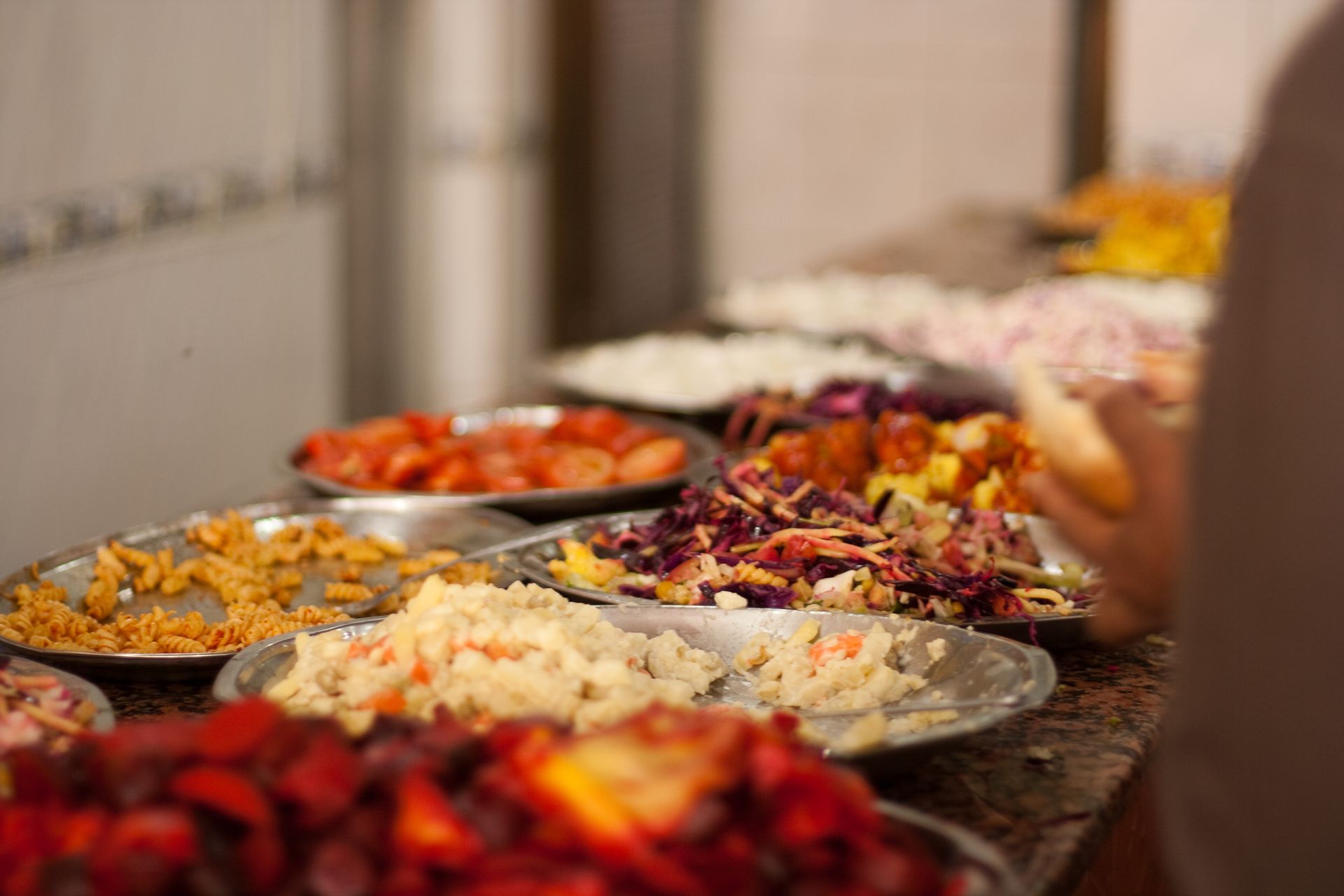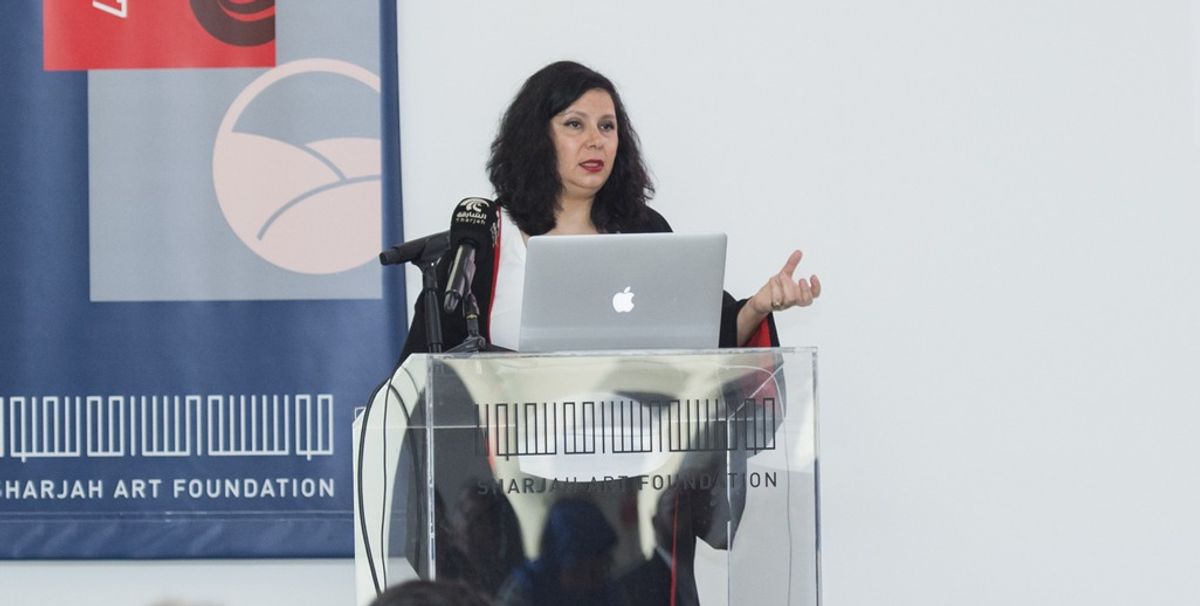The art world stinks of money and rampant ambition, while there is deprivation, both physical and spiritual, all around us: this thought has led artists like Theaster Gates in Chicago to become activists in their communities, more like social workers or pastors than commodity producers.
Christine Tohmé, 53, a post-grad in contemporary art theory at Goldsmiths College London and curator of the current Sharjah Biennial (until 12 June), should be seen in the same light. Except that she founded her arts centre, Ashkal Alwan (Forms and Colours in Arabic) in Beirut, back in 1994, when Lebanon had been at peace for only four years after a long and cruel civil war, the cultural infrastructure of a country that used to be considered the France of the Levant was in ruins, and the people traumatised.
In early 2016 Tohmé’s passport was temporarily suspended as part of a crack-down on the creative community.
Her inaugural meeting at the Sharjah Biennial in March was standing-room only, a tribute to her influence and reputation, but to be honest, the talk was less than exciting for non-initiates. It was about how art centres exist, link up, share practices and platforms (the two recurring Ps), but very little about the third P, production—the art itself.
To an outsider like me it all seemed rather abstract and colourless until I realised that the creativity here was in actually being together—you could call it a long-playing performance piece.
The Art Newspaper: The original concept of the biennial, the Venice model, is that nations show off their artists, a kind of world fair for art. This has been superseded in most of the biennials that have sprung up over the past 20 years, but now even the idea of a single-location biennial is changing. Your Sharjah Biennial is happening also in Beirut, Dakar, Istanbul and Ramallah. Is this a new format for non-profit art events in today’s globalised world?
I think notions of the national, the local, and the global or the globalised, all represent a complex network of power relations. We need to be aware of the implications of rendering the international more localised, or the local more international, and think about whether such distinctions are even possible or productive today. This was something that I was aware of when thinking about the Sharjah Biennial and how to make all the projects generated by it continue beyond, and independently of it. Dakar, Istanbul, Ramallah and Beirut were not selected for their geopolitical significance but because of affinities I have with people working passionately in these cities.
Why did you feel there was a need to rethink the biennial?
The institutional infrastructures in the Middle East are fragile to say the least. Every day, the resources available for our work grow scarcer, while it gets harder and harder for artists, curators, writers and the like to move about—I must spend 50% of my time on visa issues—so it is difficult to build lasting platforms for working together. Effective practical solutions often emerge through informal networks and personal bonds.
That is why I felt that the idea of what a biennial is, and what it can do, needs to be stretched in order to support existing art institutions, individuals, collectives and conversations. This biennial is trying to become a model for practical and sustainable infrastructures instead of a large-scale, spectacular event.
Would you explain the biennial’s title, Tamawuj (fluctuations or waves in Arabic)? And then there are the four keywords, water, crops, earth and the culinary, which you evolved with your four collaborators, Kader Attia, Zeynep Öz, Lara Khaldi and your own arts centre, Ashkal Alwan. What is this all about?
With Tamawuj, as well as the four words, we are trying to encapsulate the reality of the many collaborations, old and new, with which this biennial was conceived. We think of them as veins through which works, ideas, questions and hopes can be channelled.
The keywords, water, crops, earth and the culinary, give us a fundamental introduction to our material and cultural conditions, while at the same time allowing for more localised enquiries, such as the ones conducted by my four collaborators in their respective cities of Dakar, Istanbul, Ramallah and Beirut.
What is your online policy? [In the Middle East, while people have great difficulty in moving about, internet usage is some of the highest in the world, so a website is essential to reaching a wider public.]
For the publishing platform tamawuj.org, I invited four editors, Omar Berrada, Amal Issa, Kaelen Wilson-Goldie and Brian Kuan Wood, to collaborate closely with my four Sharjah Biennial partners in developing content around the keywords of water, earth, crops and the culinary.
There are essays, images, videos, experimental writings, fragmentary texts, recipes and other audio-visual materials in Arabic, English, French and Turkish. To make research easier, commissioned content for the platform is compiled into four downloadable packages. Each focuses on one of the four keywords and gets released with the start of its corresponding off-site project: thus, water was launched in Dakar on 8 January this year; crops goes live on 3 May in Istanbul; earth in Ramallah on 10 August; and the culinary in Beirut on 15 October. We hope to build lasting platforms, both physical and virtual, that will carry people’s energies, ideas, positions and hopes like a wave.
The culinary is what holds the Middle East together

“The culinary’s point of departure is the notion of a shared if troubled gastronomic history. It begins with the idea that a particular part of the world—call it the Middle East, the Near East, the Levant, or simply, here—is held together by how and what its people eat (and why) far more than by its nationalisms, ideologies, languages, religions, or ethnicities. The culinary proposes, from the start, that food rituals in this region are dramatic and enacted. They are the performative aspects of identity, more telling than country or community.” (From Tamawuj .org)


